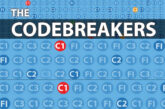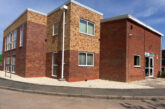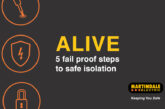
Frank Bertie, Chief Technical Officer at NAPIT, provides an overview of the changes being introduced by BS 7671:2018+A2:2022.
Now that it is here, and although we have been aware of the information that was previously released under the Draft for Public Comments (DPC) on Amendment 2, there have been significant changes to the DPC version of the Regulations. From 28th March 2022, BS 7671:2018+A2:2022 will be available for use by those in the electrical industry for electrical installations. However, as with any change to BS 7671, you will be able to continue to use the current edition until 27th September.
As a result of these changes, we must now consider two dates as well as what they mean to the electrical industry. Although both versions will be live documents, it is not permissible to combine the requirements of each version, and when carrying out any electrical work, the initial verification or periodic inspection and testing of the installation must be performed using the correct documentation for the version of BS 7671 used.
Introduced Now
Part 1
There have been some minor editorial changes within Part 1, with the inclusion of prosumers low voltage installations (PEI) under the requirements in Regulation 110.1.2 (iv). This leads to the addition of Part 8 Functional Requirements in Regulation 120.3.
Part 2
With every major amendment change there are several new definitions, including:
● Arc Fault Detection Devices (AFDD),
● PEIs including references to terms associated with the new Part 8,
● Consumer units are now designated as intended for operation by ordinary persons, therefore covering a wider range of installation as these were previously designated for domestic premises only,
● Lightning strikes and strokes are now listed as a way to explain the different instances and allow for the appropriate protection to be provided.
In the symbol information, Zdb has been included to indicate the EFLI measures at a distribution board.
Part 3
Regulation 301.1 has introduced that wording to cover where the characteristics of the installation shall be taken into account to ensure safety.
Part 4
Although they were already included in the DPC, there have been significant changes made:
Regulation 411.3.1.2: Protective Equipotential Bonding
This Regulation has been revised. It is now required that, wherever an extraneous-conductive-part within a consumer’s installation can introduce a dangerous potential difference, it must be connected to the main earthing terminal. A Note has been included clarifying that where non-metallic pipes, e.g., plastic, enter the building and are connected to metallic pipes within the building, the metallic pipes do not usually need protective bonding as they are unlikely to be extraneous-conductive-parts. The previous reference to insulating sections in metallic pipes has been removed.
Regulation 411.3.3: Additional Protection Requirements For Socket-Outlets And For The Supply Of Mobile Equipment For Use Outdoors
The requirements for additional protection for socket-outlet includes the terms BA1 (Ordinary persons), BA2 (Children) and BA3 (Disabled).
The previous bullet (i) has been expanded; the new bullet (i) now includes locations for socket-outlets not exceeding 32 A where person(s) of capability BA1, BA2 and BA3 are likely to use them.
Bullet (ii) now covers other locations for socket-outlets not exceeding 32 A.
Bullet (iii) retains the wording from the previous bullet (ii) and covers mobile equipment for socket-outlets not exceeding 32 A.
There is an exception for a documented risk assessment for bullet (ii) only, and when performed by a skilled person (electrically).
Regulation 411.4: TN Systems
Regulation 411.4.2 has introduced a revision to the Note where there is now a recommendation to provide an additional connection to Earth utilising an earth electrode. This doesn’t apply to outbuildings of a dwelling in this recommendation.
Chapter 42: Protection Against Thermal Effects
Under Regulation 421.1.7, the requirements for AFDDs now include:
AFDDs conforming to BS EN 62606 shall be provided for single-phase AC final circuits supplying socket-outlets not exceeding 32 A in the following premises:
● Higher Risk Residential Buildings (HRRB),
● House in Multiple Occupation (HMO),
● Purpose-built student accommodation,
● Care homes.
In all other premises, AFDDs are recommended for single-phase AC final circuits that supply socket-outlets not exceeding 32 A. Regulation 422.1 introduces the requirements for documentation for fire safety designs where locations such as protected escape routes are covered by regulations 422.2 to 422.6
Chapter 443: Protection Against Transient Overvoltages Of Atmospheric Origin Or Due to Switching
The provision of protection against transient overvoltages has been split into two regulations covering indirect lightning strikes and those caused by equipment. In Regulation 443.4.1, protection shall be provided for:
● Serious injury to, or loss of, human life,
● Failure of a safety service, as defined as (Safety service. An electrical system for electrical equipment provided to protect or warn persons in the event of a hazard, or essential to their evacuation from a location),
● Significant financial or data loss.
In all other instances, protection against transient overvoltages shall be provided, unless the owner accepts the risk and declares that the loss or damage is tolerable.
Regulation 434.4.2 has the provision of protective measures if equipment is likely to produce switching disturbances. Regulation 434.5 and Figures 44.2; 44.3 and Table 443.1 have been deleted, which removes Calculated Risk Level (CRL), Flash density map of the UK, environment table for fenv and illustration for calculating Lp. The requirements for SPDs are complex, and we recommend attending one of our EXPO Masterclass Roadshows for more information.
Section 514: Identification And Notices
Several changes have been made within this section, such as provisions for identification and notices to be included in certification instead of labels within domestic or similar installations, where the information is based on the model forms in Appendix 6 guidance for recipients.
Chapter 53: Protection, Isolation, Switching, Control And Monitoring
Regulation 531.3.2 bullet (ii) describes the advantages of using RCBOs for individual circuits in residential premises to minimise unwanted tripping.
Within Regulation 531.3.3 it is now made clear that Type AC RCDs can only be used for fixed equipment where it is confirmed that such equipment contains load currents with no DC components.
Part 6 Inspection and Testing
The insulation resistance requirements of Regulation Group 643.3 have been revised, and it is now required that 500 V DC tests be conducted before connection of equipment liable to damage or to influence results. This is to be followed by a 250 V DC test when such circuits are reconnected. RCD testing now has one requirement to test at IΔn for all RCD types.
Part 7s
All part 7s have been revised, including Section 714 in which additional protection not exceeding 30 mA is required for any lighting that is accessible to the public. Further guidance will follow on these more specialist areas.
Part 8
The requirements for the design, installation and verification of prosumers low voltage electrical installatons are detailed in this new part.
Appendixes
All of the appendices have been altered, either slightly or significantly. Appendix 6 has been altered, with a reduced schedule of inspections for the EIC and an example checklist. The model form for the schedule of test results has been revised and now has a separate schedule for circuit details and test results.
To conclude
There are some significant changes to BS 7671:2018+A2:2022, but we have only scratched the surface in this article.
For more information on how to comply with BS 7671:2018+A2:2022, attend one of our EXPO Roadshows, where you can learn from experts who are JPEL 64 members and can provide the best advice and continuing professional development (CPD).
For more information on NAPIT scheme registration click here









